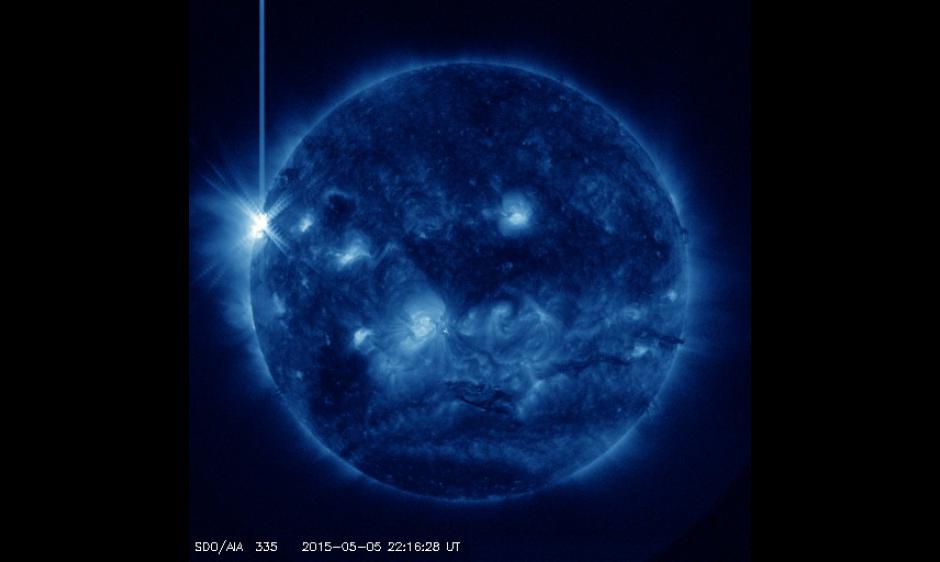
R3-Strong Radio Blackout from Active Region 12339
An impulsive R3-Strong radio blackout was observed shortly after 2200 UTC (1800 EDT) today (05 May 2015). Given the impulsive nature of this event, as well as the source location on the eastern limb of the sun, we are not expecting a radiation storm at Earth. We will be on the lookout for new imagery from the NASA SOHO mission to determine if there was an associated coronal mass ejection (CME) with this event. Given the same logic above however, we do not expect there to be one that would impact Earth.
We are expecting several active regions to be rotating onto the visible disk later this week and into the weekend. We have observed a few, energetic CMEs on the back side of the sun with these regions so we expect that overall solar activity will be on the rise in the short to medium term. Stay tuned here for updates.